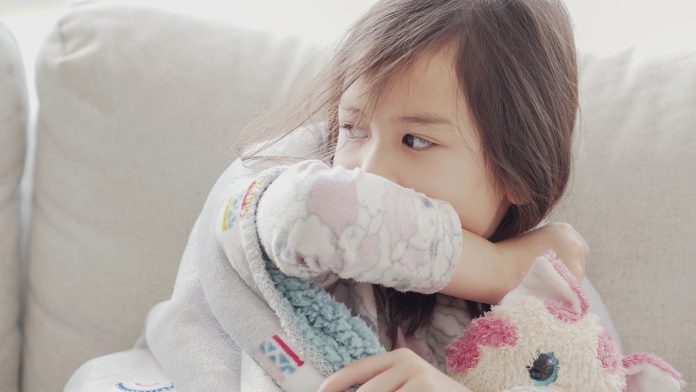
An investigation into the effectiveness of tuberculosis treatment in children has driven a change in the World Health Organization’s (WHO) global guidelines for managing the disease.
University College London researchers found that the duration of tuberculosis treatment for the majority of children with drug sensitivity can be shortened from six to four months, reducing the burden on families and healthcare systems.
The bacterial infection is spread through the inhalation of tiny droplets from coughs and sneezes of an infected person. It mainly affects the lungs but can affect any part of the body. Tuberculosis treatment involves a course of antibiotics for six months.
Principal Investigator, Professor Diana Gibb (MRC Clinical Trials Unit at UCL), said: “It is estimated that nearly one-quarter of children with tuberculosis die, but the vast majority (90%) die because they are not diagnosed and started on treatment. Shorter treatment for children with non-severe tuberculosis allows savings of on average $17 (£12) per child, which can be used to improve the screening coverage and find the missing children with tuberculosis.”
The research was published in The New England Journal of Medicine.
Investigating tuberculosis treatment
Researchers from the MRC Clinical Trials Unit at UCL collaborated with partners in South Africa, Uganda, Zambia, and India on the SHINE study, the first randomised control trial to assess whether a shorter course of tuberculosis treatment for children with a non-severe diagnosis could effectively be treated with a shorter course of medication.
Minimal tuberculosis is the non-severe lung or lymph gland type, where the tuberculosis bacteria cannot easily be found in the sputum through smear microscopy (smear negative). In 2020, an estimated 1.1 million children fell ill with the condition globally. However, despite children being more likely to have minimal tuberculosis, their treatment length has been based on the results in trials in adults, requiring six months of a combination of daily medicines.
The SHINE team discovered that tuberculosis treatment for four months using the same standard medicines was as beneficial as a six-month treatment course for children.
The benefits of reducing tuberculosis treatment length have a selection of benefits including, reducing time spent in clinics, reducing treatment costs and releasing the burden on caregivers.
The first author, Dr Anna Turkova (MRC Clinical Trials Unit at UCL), said: “People think that a child with TB must be very sick – that’s not true. It is known that two-thirds of children who fall ill with TB every year have non-severe TB and therefore could be treated with shorter treatment.”
Studying the impact of reducing treatment length
The trial involved 1,204 children aged two months up to 16 years with non-severe tuberculosis, who were divided randomly into two groups to take either four or six months of tuberculosis treatment with medication. 11% of the children were living with HIV. All the children were followed for 18 months after enrolment to see whether their treatment had been successful.
The results clearly showed that children who received the shorter course did as well as those on the standard six-month tuberculosis treatment, regardless of the age group, country or HIV status, with few and similar side effects in both groups.
The evidence from SHINE was reviewed by the World Health Organization Guidelines Development Group, which recommended in August 2021 that in children and adolescents with non-severe, presumed drug-susceptible tuberculosis, a four-month regimen should be used rather than the standard six-month regimen. Important considerations about how to determine eligibility for the shorter treatment regimen will be described in WHO’s full consolidated guidelines coming out in March 2022 and the operational handbook.
Lead investigator at the Zambian trial site, Dr Chishala Chabala (University Teaching Hospital, Lusaka, Zambia), said: “Children are often presenting with mild disease. If they are diagnosed on time, they can now be treated with a shorter course. The SHINE results are an opportunity to improve treatment of children with TB.”
Trial paediatrician Dr Priyanka Anand Kulkarni (B.J. Medical College, Pune, India) added: “For parents, it’s very challenging to manage the pill burden and to motivate kids to complete the full duration of treatment. The short treatment course can make it more manageable.









